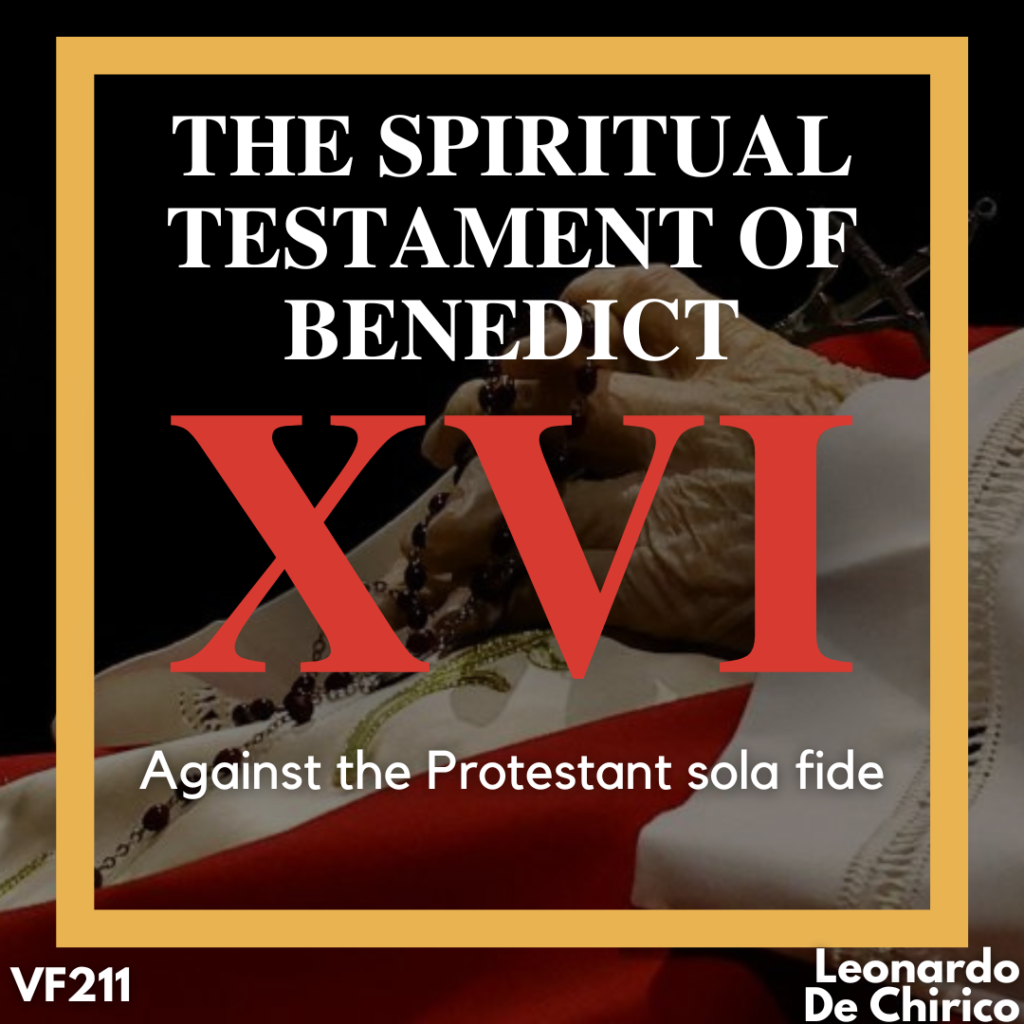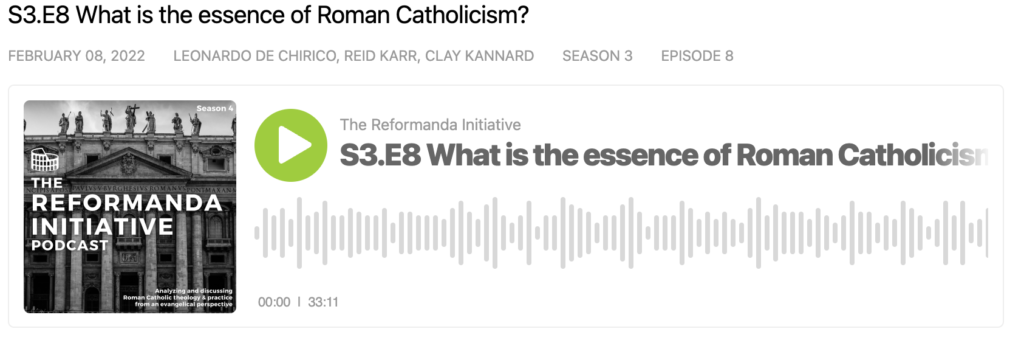“Almost a spiritual testament.” This is the subtitle of the book published by one of the great Roman Catholic theologians of the twentieth century who then became pope of the Roman Church, Joseph Ratzinger – Benedict XVI (1927-2022), after his death. The book (Che cos’è il cristianesimo. Quasi un testamento spirituale, Italian edition: 2023) is a collection of fifteen essays, short papers, and letters which were written after his resignation from the papacy in 2013. Four of them are unpublished whereas the others had already been published elsewhere. The late German pope wanted these essays to be put together and made public after his death and entrusted the project to Elio Guerriero, one of his biographers. Because of the post-resignation period to which they belong and the desire of the pope emeritus for them to appear posthumously, the book is subtitled “Almost a spiritual testament.”
The First and the Last Book
What is Christianity (the title of the book) resembles the title given to the most famous book of his prestigious career: Introduction to Christianity (1968). This volume had multiple reprints and several editions in other languages. With it, Ratzinger became a “star” of the theological world outside of the small academic circles of German universities. It is curious that the first book and the last book of his life seem to be linked by their titles. With the Introduction, Ratzinger wanted to give a robust presentation of the Roman Catholic theology that had come out of the Second Vatican Council (1962-1965). He wished to dispel possible misunderstandings about Vatican II having been a “rupture” from traditional Roman Catholicism and re-affirm its continuity within the mainstream Roman Catholic theology of all ages. At the end of his life, in What is Christianity, the late Ratzinger wants to make sure Roman Catholic Christianity is warned not to become “protestant” or “secular.” On the contrary, he wants his church to maintain its Roman Catholic identity, especially in its relationship with other religions (e.g. Islam, Judaism), its theology of the priesthood, and the sacramental nature of the Eucharist.
The two books are “apologetic” in nature: both want to associate Christianity strongly with Roman Catholicism, implying at least that the two are really one and the same. According to Ratzinger, Christianity is Roman Catholicism and vice versa. This was his conviction from the beginning to the end of his life. Besides their similarity, there are obvious differences between the two books. The first is an organic, scholarly, and comprehensive treatment; the second is a collection of different pieces, mainly describable as spiritual meditations. The theological weight of the latter is lighter than the former even though the concern to preserve the integrity of Roman Catholic Christianity is the same.

Two Perceived Threats
The danger of secularization is particularly evident in the chapter on the Church and the scandals of sexual abuse (pp. 143-160). There Ratzinger tells of how the sexual revolution in the sixties entered the seminaries and how the gradual erosion of Roman Catholic moral theology concurred with the lowering of the ethical standards of Catholic priests, especially in the West. Nothing is really new here.
What is more striking is the other perceived danger by the late Benedict XVI, i.e. the “protestantization” of the Roman Catholic Church (p. 127). Ratzinger sees the slippery slope towards the Roman Church becoming influenced by the Reformation in three areas which are briefly touched upon in the book: the theology of the priesthood, justification by faith alone, and the significance of Communion. It is no coincidence that the two lengthier and weightier chapters of the book are dedicated to the priesthood (pp. 96-122) and to the meaning of the Eucharist (pp. 123-140). In dealing with these topics, Ratzinger seems to have in mind the present-day situation of the Roman Catholic Church in Germany. Theologically though, it is sola fide (and Martin Luther behind it) that is considered the chief negative inspirator of these worrying trends.
Attacking sola fide
Ratzinger is concerned that Luther’s interpretation of the Christian ministry as mainly characterized by preaching, prayer, and pastoral care is becoming widespread in Catholic circles too (pp. 97-98). In this Protestant understanding, the minister is not a priest offering a sacrifice on behalf of the people, but a leader guiding the church through the Word. What is missing, according to Ratzinger, is the sacrificial nature of the Eucharist and the mediatorial role of the priest representing the hierarchical church standing between God and humanity.
According to him, the ultimate problem of this view is Luther’s sola fide (faith alone). It is true that Ratzinger takes issue with sola Scriptura as well (p. 38), siding with the German liberal theologian Adolf Von Harnack who criticized the “formal principle” of the Reformation as non-sensical. Benedict shares the rejection of the “Scripture alone” principle, but he does not elaborate on it. His main target is sola fide (the “material principle” of the Reformation).
Sola fide is the biblical principle rediscovered by Luther and the Protestant Reformation whereby Jesus Christ with His sacrifice on the cross has accomplished the sacrificial system and has fulfilled the priestly role as mediator. Salvation is therefore not through the works of the law nor through the agency of the temple/church with its hierarchy, but by faith alone in Christ alone.

Luther child of Marcion?
Benedict XVI argues that “sola fide, in Luther’s sense, was never taught in the ancient church” (p. 99) but was actually promoted by Marcion, the second-century heretic who contrasted the God of the Old Testament (characterized by selfish holiness and anger) and the God of the New Testament (characterized by love and forgiveness). Ratzinger sees Luther as a child of Marcion (also on p. 133-134) because the German reformer did not reiterate the sacrificial system of the Old Testament, but considered it fulfilled and overcome by the sacrifice of Christ whose benefits can be received by faith alone (p. 107). In the Roman Catholic view, while paying lip service to the “once-and-for-all” sacrifice of Christ on the cross, the Mass is still seen as a “sacrifice” that is offered and mediated by the priest who is part of a hierarchical system. Ratzinger wants to ground the Catholic view on the Letter to the Hebrews, Psalm 16:5, and Deuteronomy 10:8 (pp. 110-122), but his interpretation of these passages is faulty and only proves what is already assumed in the first place. While Hebrews clearly says that the new covenant abolishes the sacrificial system, Benedict says that it also reiterates it. Psalm 16:5 is hardly proof of the Roman Catholic theology of priesthood, and Deuteronomy 10:8 talks about the Levite priests. On the whole, his biblical interpretation of Hebrews contradicts the plain meaning of the text, and the other two passages are inconclusive for the topic.
The Marcionist origin of sola fide is also seen by Benedict in the Protestant account of salvation. According to Ratzinger, Luther failed to see that redemption is “becoming one thing with the love of Jesus Christ” (p. 100); moreover, Luther’s doctrine of simul iustus et peccator (simultaneously justified and sinner) does not change man but only adds an external layer (p. 133). Evidently, the late pope did not appreciate the fact that the doctrine of justification says that we are declared righteous based on Christ’s righteousness, but it makes room for the biblical doctrine of union with Christ, regeneration, and sanctification whereby we are united with Christ and changed into His image. Not only is Luther associated with Marcion and made a heretic, but the Protestant position is here caricatured and made a strawman.
The (Catholic) Eucharist is “completely different” from the (Protestant) Supper
There is more. Sola fide is also responsible for another mistake of the Protestant Reformation, i.e. its theology of the Lord’s Supper in contrast to the Roman Catholic view of the Mass. Here is how Ratzinger explains the difference: “In the Protestant interpretation the Eucharist is only a meal … while for the Catholic faith in the Eucharist the entire process of the gift of Jesus in his death and resurrection is always present” (p. 131). Between the two accounts, there is a “profound difference” (p. 128, p. 133). Actually, there is a “fundamental contrast” (p. 132). According to Ratzinger, the absence of transformation of the bread and the wine into the body and blood of Jesus reflects the “most profound difference between the Protestant interpretation of what it means to be a Christian and the Catholic faith” (p. 133).
In Benedict’s view of Protestantism “becoming a Christian does not change man, but only adds to him something else” (p. 133). As the justified man is not changed, so the bread and the wine are not changed. For Roman Catholicism, on the contrary, being saved means to become righteous, and the Eucharist is the transformation of the substance of bread and wine into something else. Again, Ratzinger said, “It is absolutely evident that the Supper and the Mass are two completely different forms of worship which exclude one another because of their nature” (p. 98).
This harsh view of the Protestant faith may come as a surprise to some readers but is nothing new. It has always been a mark of Ratzinger’s theology. His robust Roman Catholic orthodoxy has always found the sola Scriptura and sola fide principles of the Reformation utterly unpalatable. Certainly, he was critical of Liberal Protestantism, but he was equally dismissive of the 16th-century Protestant Reformation and of evangelicals.
After his death, in painting a rather one-sided picture of Benedict as a champion of Christian orthodoxy, some have argued that “Benedict can and should become a teacher to many more Protestants” (Tim Perry, “Pope Benedict: A Brief Protestant Requiem”, Ad Fontes, Jan 2, 2023). Well, yes and no. Yes, because we should be open to learning from anyone, even from the opponents of the evangelical faith. No, because despite his conservative theology, as his spiritual testament clearly shows, his thought was shaped around anti-Protestant commitments and, ultimately, around non-biblical principles.



